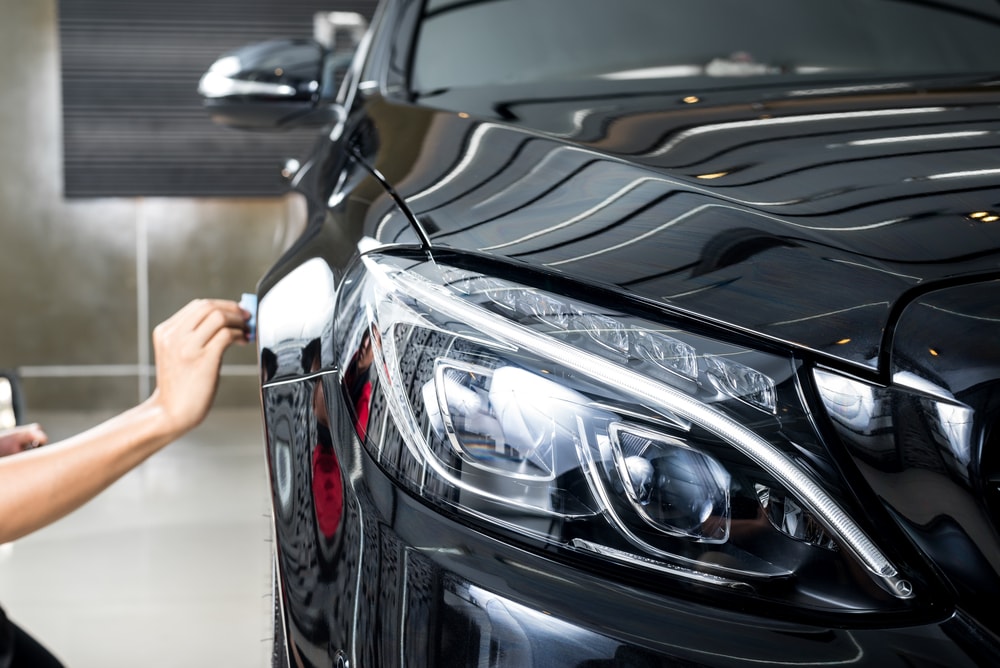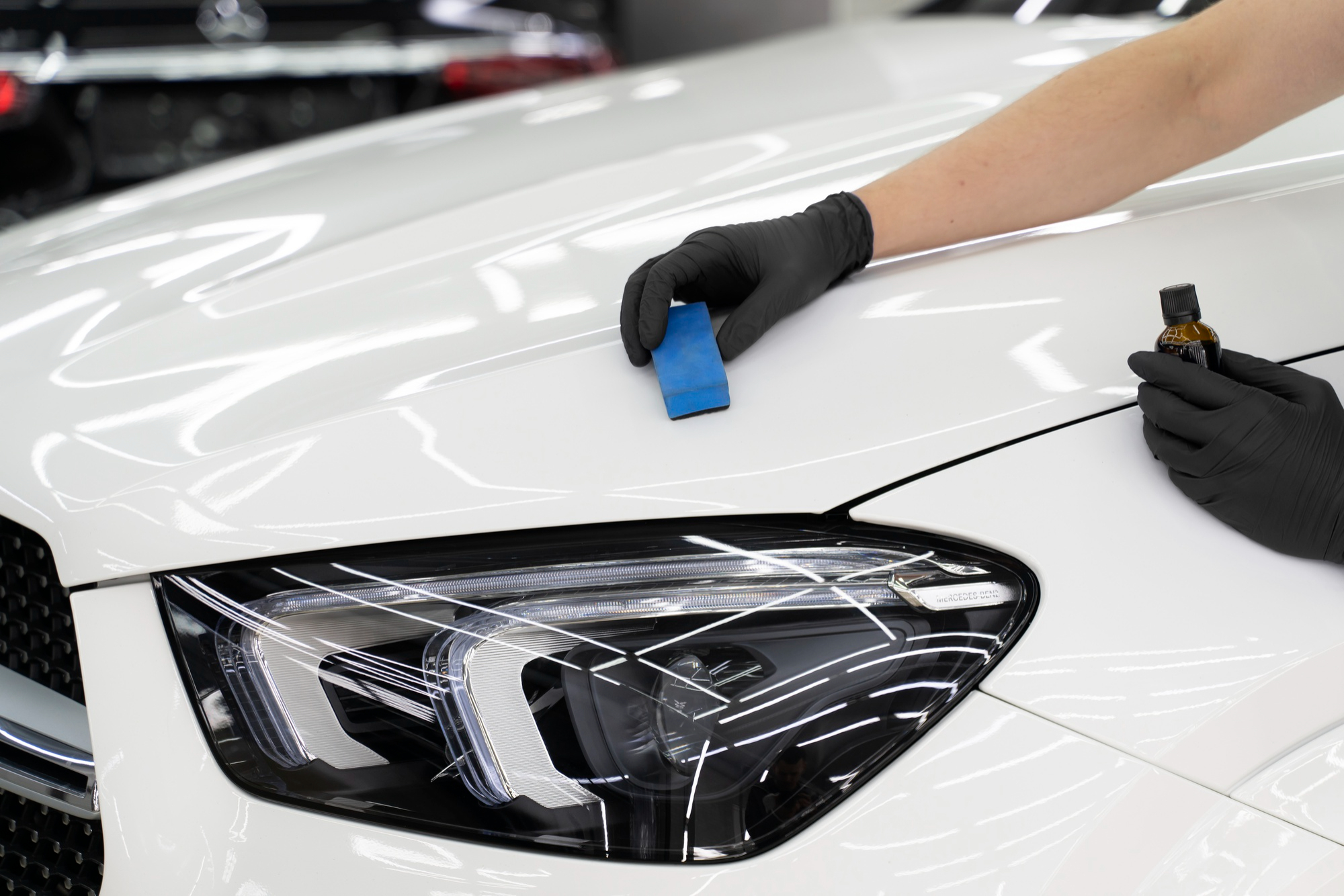Discover the Advantages of Ceramic Coatings San Jose for Your Auto
Discover the Advantages of Ceramic Coatings San Jose for Your Auto
Blog Article
Introducing the Scientific Research Behind Ceramic Coatings: Just How Does It Work and Why Is It Superior to Traditional Options?
Ceramic coverings have actually been acquiring appeal in numerous sectors for their outstanding performance and durability. The scientific research behind these finishings goes beyond plain surface defense, delving right into the detailed chemistry that makes them stand out from conventional choices (ceramic coatings san jose). Understanding just how ceramic finishes job and why they outshine traditional options is essential for those seeking to improve the longevity and strength of their materials. What precisely establishes ceramic coatings apart, and exactly how do they accomplish such exceptional results?
The Chemistry of Ceramic Coatings
In understanding ceramic finishes, delving right into the elaborate chemistry behind their structure is important for comprehending their capability and durability. Ceramic finishes are primarily made up of silicon dioxide (SiO2), which forms a protective and strong layer when put on various surfaces. This chemical structure supplies phenomenal resistance to heat, chemicals, and rust, making ceramic finishes highly demanded for a large range of applications.
The chemistry behind ceramic layers includes the formation of covalent bonds between silicon and oxygen atoms, creating a stiff network that improves the finishing's sturdiness and durability. Furthermore, the visibility of various other aspects such as zirconium, light weight aluminum, and titanium further boosts the layer's residential or commercial properties, offering boosted hardness and attachment to surfaces.
Comprehending the chemical structure of ceramic finishes enables the personalization of solutions to fit details requirements, whether it be for vehicle, industrial, or residential objectives. By harnessing the power of chemistry, ceramic coverings continue to lead the way for superior protection and performance in numerous markets.
Benefits of Ceramic Coatings

One more considerable advantage of ceramic coatings is their hydrophobic nature. This residential property creates water to grain up and roll off the covered surface area, carrying dirt and impurities with it. Consequently, ceramic layers make cleaning and preserving surfaces a lot easier and less taxing. In addition, ceramic finishings provide boosted color and gloss depth, providing surfaces a lively and shiny look. On the whole, the multitude of advantages supplied by ceramic layers make them a remarkable alternative compared to standard layer methods.
Exactly How Ceramic Coatings Bond
Ceramic finishings bond to surfaces through a procedure that entails molecular attachment and chemical communications. When a ceramic layer is applied to a surface, it creates a strong bond by chemically sticking to the surface at a molecular degree.
Furthermore, the chemical communications between the ceramic covering and the surface area even more enhance the bond. ceramic coatings san jose. These communications allow the ceramic covering to produce a continual and smooth layer on the surface area, offering superb protection and resilience. Unlike standard coatings that may rest on the surface area without completely bonding, ceramic coverings develop a permanent bond that is resistant to chemicals, UV rays, and extreme environmental conditions

In significance, the bonding system of ceramic finishings makes sure a reliable and resilient protective layer that outshines typical finish options. This superior bond adds to the toughness, scrape resistance, and long life of ceramic finishings, making them a preferred selection for different applications.
Resilience of Ceramic Coatings
The outstanding longevity of ceramic finishes originates from their robust molecular attachment and chemical communications with surface areas, guaranteeing a resilient safety layer that surpasses standard coating options. As soon as applied, ceramic coverings form a solid bond with the substratum, creating a durable obstacle versus various ecological stress factors such as UV radiation, chemicals, and abrasions. This bond is so secure that it can hold up against the roughness of daily usage without degrading or weakening swiftly.
Unlike traditional layers that may weaken with time, ceramic layers preserve their integrity for a prolonged duration, offering resilient security for the underlying surface. The solid molecular structure of ceramic coverings resists cracking, fading, and peeling, ensuring that the surface area stays protected and aesthetically pleasing for many years to find. This sturdiness not only minimizes the requirement for frequent reapplications but additionally conserves time and cash over time. In general, the remarkable toughness of ceramic layers makes them an exceptional option for shielding a variety of surface areas in numerous applications.
Ceramic Coatings Vs. Conventional Alternatives
In contrast to traditional coating methods, ceramic layers offer a distinctive blend of durability and protective abilities that set them apart in numerous surface security applications. Typical choices such as wax or sealants supply a temporary layer go to my blog of security that can subside rapidly, needing frequent reapplication. On the various other hand, ceramic finishings develop a strong bond with the surface, creating a long-term or semi-permanent barrier that is extremely resistant to abrasion, chemicals, UV rays, and extreme temperatures.
Moreover, ceramic coatings use premium hydrophobic homes compared to typical finishings. The hydrophobic nature of ceramic coverings creates water to bead up and roll off the surface, carrying dirt and impurities with it. This self-cleaning effect aids to maintain the surface's cleanliness and gloss for extensive durations, decreasing the need for frequent upkeep.
Furthermore, ceramic coverings have a thicker layer contrasted to standard alternatives, offering enhanced scrape resistance and protection versus minor influences. This longevity makes certain resilient performance and assists preserve the visual appeal of the dealt with surface for an extensive period.
Conclusion
To conclude, the science behind ceramic coatings hinges on their chemical make-up and bonding buildings, making them above traditional choices. The advantages of ceramic finishes include raised resilience and defense for surfaces. By comprehending exactly how ceramic coatings job and their benefits over conventional choices, one can make informed decisions when considering finishing alternatives for various applications.
Unlike conventional layers that might rest on the surface area without totally bonding, here ceramic finishings develop a permanent bond that is resistant to chemicals, UV rays, and severe environmental conditions.
The extraordinary long life of ceramic coatings stems from their robust molecular adhesion and chemical interactions with surface areas, ensuring a durable protective layer that exceeds standard finishing options.Unlike conventional coverings that may weaken over time, ceramic coatings maintain their integrity for an extensive duration, providing durable security for the underlying surface.In contrast to traditional coating methods, ceramic layers use a distinctive webpage mix of sturdiness and safety capacities that establish them apart in different surface area defense applications. By recognizing just how ceramic coverings work and their benefits over conventional alternatives, one can make educated choices when taking into consideration layer choices for various applications.
Report this page